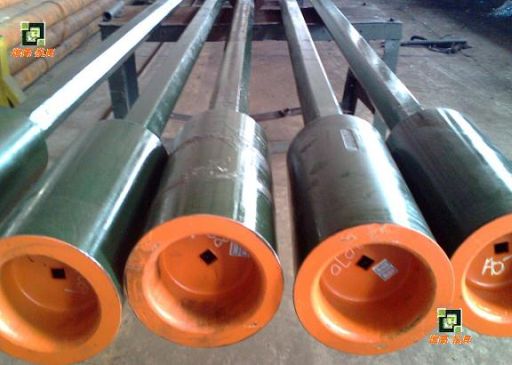Torque

http://b2bimg.bridgat.com/files/hexagonal_kellydrill_collardrill_pipeoil_tools.jpg
To drill into the earth, we need to spin our drill bit. To spin the drill bit, we use the rotary drive and a kelly. The rotary drive spins the whole length of drill pipe by grabbing onto the kelly, a special, usually hexagonal, pipe. The kelly is connected to the top of our drill pipe, and it is much stronger than the rest of our pipe, so it can withstand the forces acting on it. The forces apply a torque. Torque is what we use every day to open plastic bottles and turn door handles. Torque can be visualized and defined by looking at the following:
http://upload.wikimedia.org/wikipedia/commons/2/21/Torque.JPG

William Czyzewski

William Czyzewski
This is a simplified
version of the torque equation. The strange "t" is
actually the lower-case Greek letter tau, and it
represents the value for torque. The "F" represents
a force applied perpendicular to an arm that extends
outward from the point where we see our "twist". The
"d" is the distance between where the force is applied and
where the center of the twist is. In the picture of
the wrench above, we can see that if Force A and Force B
are equal, Force B will apply more torque to the nut
because Force B acts at a greater distance. Further,
we can also see that at distance zero, the dot at the
middle of the nut, we will have no torque whatsoever.
While the torque allows us to spin the drill bit and cut through rock, tension is also important. If we have too little tension in our cables, too much force will be exerted on our drill bit, and the forces caused by friction will exceed our torque. If friction forces exceed the torque that our rotary drive makes, our pipe will stop spinning. You can see this exact same thing happen when you push down too hard on a power drill and the drill bit "catches"!
While the torque allows us to spin the drill bit and cut through rock, tension is also important. If we have too little tension in our cables, too much force will be exerted on our drill bit, and the forces caused by friction will exceed our torque. If friction forces exceed the torque that our rotary drive makes, our pipe will stop spinning. You can see this exact same thing happen when you push down too hard on a power drill and the drill bit "catches"!